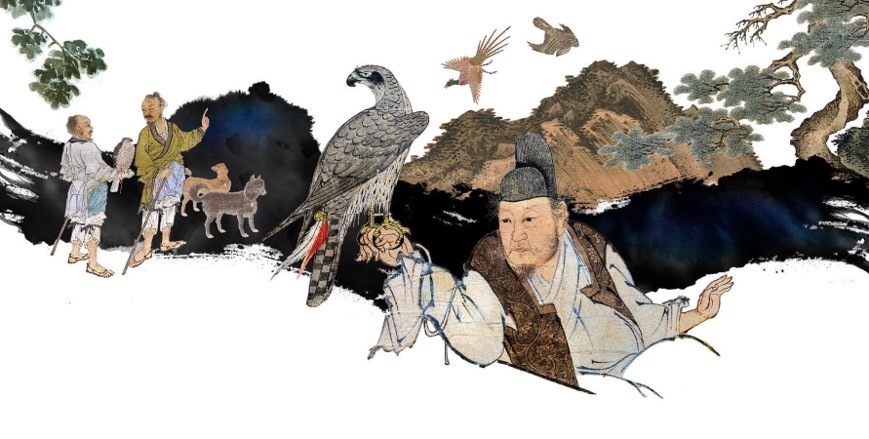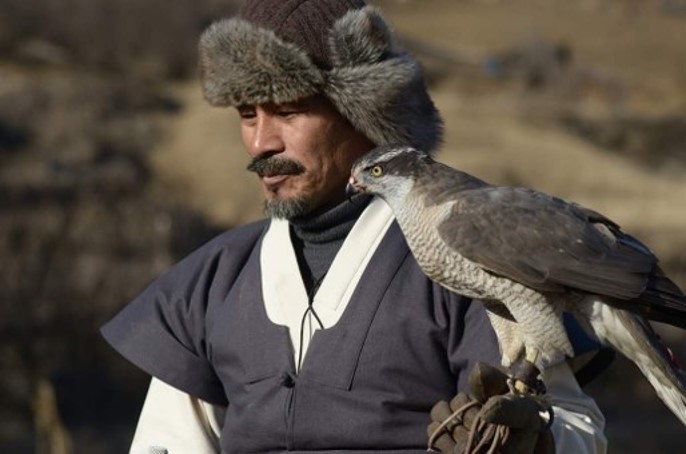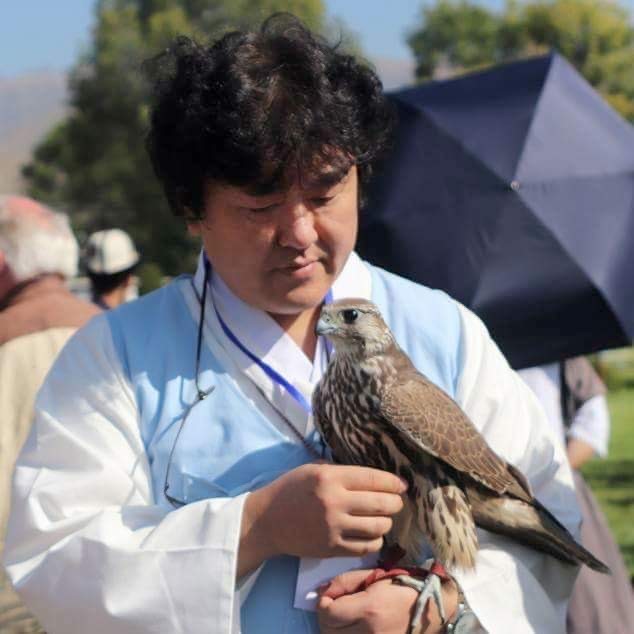- 한국어
- English
- 日本語
- 中文
- العربية
- Español
- Français
- Deutsch
- Pусский
- Tiếng Việt
- Indonesian
By Honorary Reporter Nicole Bergeaud from France
I knew nothing about falconry until my friend Marc Jaubert, a French falconer, introduced me to this ancient art practiced in more than 80 countries including Korea.
Falconry is the art of capturing game in its natural environment using a trained bird of prey. Falconers carry on this tradition spanning over a millennium and that received recognition in 2010 by UNESCO as an Intangible Cultural Heritage of Humanity.

Illustration of falcons in Korea (Woo Dong-seok)
Because of my newfound interest in Korean falconry, I interviewed from mid-October to November Woo Dong-seok, a researcher of Northeast Asian falconry and graphic designer, via email. Dedicated to the preservation of this culture, he is a member of the Korea Falconer's Association in Jeollabuk-do Province.
The following are excerpts from the interview.

Korean falconer (Park Yong-soon)
How did you get into falconry?
I was born in Busan and began to study falconry by focusing on the rehabilitation of birds of prey while helping protect wild birds since my father was a renowned ornithologist. At the university where he taught, he set up a bird protection center in the 1990s and took care of many injured birds. My maternal grandfather was also a famous falconer in what is now North Korea, and along with my father, he told me many stories about falconry when I was a child.
I studied the traditional methods of Korean falconry to spread data on its culture. I also researched Chinese, Korean and Japanese falconry. My study of graphic design at university helped me restore archival photos and promote falconry to the public.
What is unique about Korean falconry?
Falconry in Korea was not only a way of hunting but also an expression of political power to show who owned the land and a form of entertainment for the elite, who had the means to mobilize a large group of people to hunt.
From the 17th century, falconry evolved due to several wars and political and social changes. It eventually turned into a form of hunting in Korea's agricultural society, deeply rooted in the life of the people. This is perhaps its most unique trait.

Woo Dong-seok (Woo Dong-seok)
Where do you find falcons?
In Korean falconry, only those with a hard-to-get government permit can catch a raptor in fall for training and use in falconry. In spring of the following year after falconry season ends, the birds are released into the wild.
Is falconry still alive in Korea?
It lost its foundation due to societal changes caused by the Korean War and the rapid industrialization that followed. Strong policy toward nature conservation and shifts in public perceptions of hunting make it more difficult to restore falconry culture. In 1998, however, Jeollabuk-do Province designated falconry Intangible Cultural Heritage No. 20.
What future does falconry have in the country?
Global changes mean falconry cannot be practiced as in the past. The wisdom and experience humans have enjoyed with raptors and nature for thousands of years must be reused. One way to do this is the rehabilitation of raptors for nature conservation, and falconry skills are a valuable basis for this in producing synergy when combined with veterinary knowledge. Another method is environmental education through knowledge gained from falconry. As indicators of the ecosystem pyramid, raptors are highly useful for understanding basic principles of nature.
kalhong617@korea.kr
*This article is written by a Korea.net Honorary Reporter. Our group of Honorary Reporters are from all around the world, and they share with Korea.net their love and passion for all things Korean.